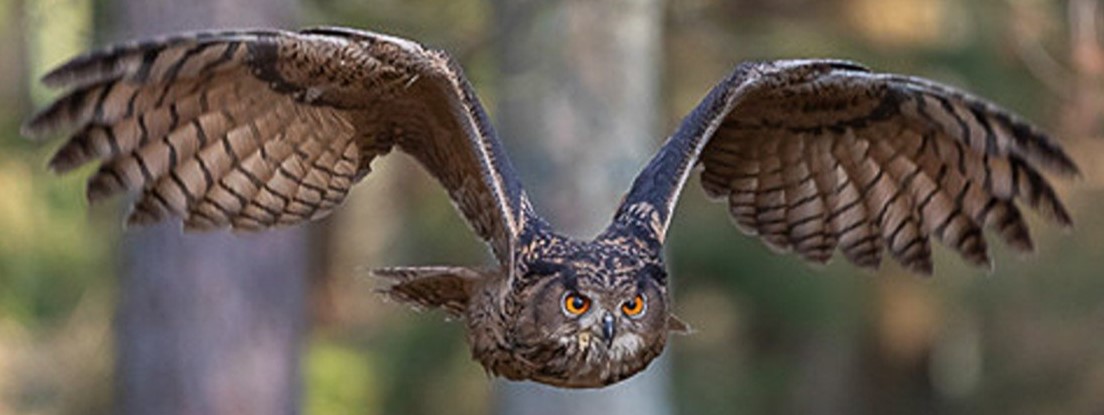Hm. And now I'm wondering if there are owls that do the infamous 'ass blast'? It's something some birds - like cockatiels for example - do when they are attacked by a predator (or get scared). They release all their tailfeathers.
Superbowl
For owls that are superb.

US Wild Animal Rescue Database: Animal Help Now
International Wildlife Rescues: RescueShelter.com
Australia Rescue Help: WIRES
Germany-Austria-Switzerland-Italy Wild Bird Rescue: wildvogelhilfe.org
If you find an injured owl:
Note your exact location so the owl can be released back where it came from. Contact a licensed wildlife rehabilitation specialist to get correct advice and immediate assistance.
Minimize stress for the owl. If you can catch it, toss a towel or sweater over it and get it in a cardboard box or pet carrier. It should have room to be comfortable but not so much it can panic and injure itself. If you can’t catch it, keep people and animals away until help can come.
Do not give food or water! If you feed them the wrong thing or give them water improperly, you can accidentally kill them. It can also cause problems if they require anesthesia once help arrives, complicating procedures and costing valuable time.
If it is a baby owl, and it looks safe and uninjured, leave it be. Time on the ground is part of their growing up. They can fly to some extent and climb trees. If animals or people are nearby, put it up on a branch so it’s safe. If it’s injured, follow the above advice.
For more detailed help, see the OwlPages Rescue page.
Great question!
I haven't encountered what looks to be called "fright molt" at all yet in my "studies" and this blog post from Suffolk Owl Sanctuary describes owls as being very slow molters. The only type of exception that I've seen is with Screech Owls dropping most of their head feathers, which don't affect flight near as much as other big bald patches would, resulting in situations like our friend Weird Alice where they look like they were treated a bit roughly, but it's basically just a bad haircut.
This post from a buzzard blog says fright molt is basically unheard of for raptors. I know I tend to think of agility as something very important to a raptor, and also since they're also likely more often the aggressor than the victim, it may not be worth it from an evolution standpoint to lose those feathers all at once. I'll have to keep an eye out for more info.
Losing all your tail feathers might give them a -10/stealth penalty ( noise due to worse aerodynics ) and - 10 agility for a limited amount of time instead of let's say -1 stealth penalty for much longer period. So maybe advantageous to do when enough easy prey around or plenty of reserves?
I did some more searching and found this article and also this article.
The first article is pretty good and gives a god amount of general info about feathers, feather growth, and associated problems. With raptors relying on maneuverability provided by the tail, that loss of agility compounded with the energy requirements of having to regrow feathers creates a dangerous situation for a bird of prey. There are also associated problems with stress feather loss and infections or damage of the follicles that can occur that can prevent those feathers from ever growing back.
The second article talks about how they never release a raptor with damaged tail feathers, as they are so important to the birds' success in the wild and talks more about molting and imping, the grafting of sound donor feathers onto the shafts of damaged feathers so most function is restored until the bird can shed and regrow them naturally.
With their size and hunting style, tails seem to play a critical role for raptors.